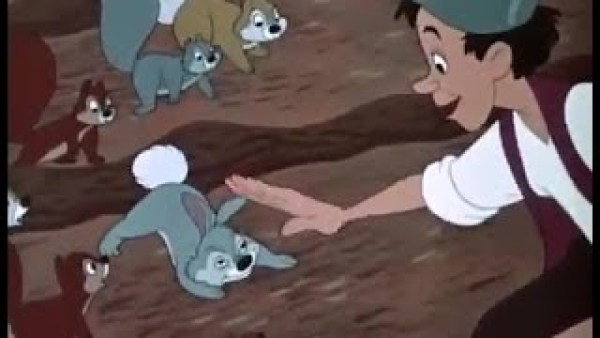
The Real Johnny Appleseed…
Like almost anyone that grew up in Indiana, I have a very specific image of Johnny Appleseed in my mind’s eye:
A ruddy man on the edge of being elderly, whistling cheerfully and tromping down dirt roads in bare feet. Johnny Appleseed has a grin and greeting for every passerby. On his head, of course, is the obligatory pot. Strapped across his poorly-clothed back, a sack of apple seeds, which he scatters over hundreds of miles of Indiana dirt.
A lovely myth, but, like most myths, not quite the real thing…
Franchises, not free trees. Johnny Appleseed (real name John Chapman) didn’t plant trees orchards but tree nurseries. Once complete, he’d entrust them to a local caretaker, who sold the trees at a profit. The real Johnny Appleseed would then return every few seasons to check on the nurseries.

Missionary man. Chapman spent as much time preaching as he did planting apple trees. Chapman was an early member of The New Church, a religious movement founded by a Swedish theologian. His sermons frequently dwelt on his fellow settlers’ weakness for extravagant luxuries like calico. And tea.
Animals to the extreme. Chapman wouldn’t harm a fly. Literally. Numerous accounts document how forcefully Johnny Appleseed cared for animals. In one story, he forced a family to extinguish its cabin fire so that a swarm of mosquitos would not singe their wings. And, of course, he became an ardent vegetarian.
Savvy saint, savvier businessman. In the frontier days of the Midwest, simply planting trees on a plot of land established ownership. By the time he died, Chapman had amassed 1400 acres worth of valuable tree nurseries, mostly in Indiana and Ohio. His sister inherited the property, but lost almost all of it to taxes and a fledgling economy.

Booze, not baking. Contrary to antiquated school teachings, John Chapman didn’t plant varieties of hefty, delicious apples, but rather tart ones used for making cider. In the days before modern germ theory, alcoholic beverages like hard cider were a safer drink than fresh water, since the alcohol killed harmful bacteria. Also people liked getting drunk.

Sack substantiated, but pot only possible. The depiction of Johnny Appleseed in ragged clothes with a sack on his back and a pot on his head was mostly true to life. He wore ragged clothes as a reflection of his religious beliefs, and he used his well-documented sack to carry seeds across country roads.
The pot might be myth. Although there are accounts of him placing a pot on his head, there’s little evidence that he wore it regularly as a fashion accessory. Some historians believe he may have worn a tin hat, which he sometimes used as a bowl.
Prohibition problems. Most of Johnny Appleseeds celebrated orchards were chopped down and burned by a bunch of jerks during Prohibition, since these apples were used exclusively for cider-making. The only remaining apple tree produced by his wandering is a 176-year-old apple tree in Nova, Ohio.

A death in dispute. The exact location of his grave is a matter of some historical contention. Although most historians agree he died in Fort Wayne in the sometime in the later 1840s, there are several locations in the city that claim to hold his grave.

A little creepy. Before he died, Johnny Appleseed was frequently seen wandering around the streets of Fort Wayne, stopping to preach at citizens and then pick through garbage for discarded clothing. Even in freezing weather, he would walk the streets virtually naked. Johnny Appleseed was kind of his own neighborhood’s creepy old man.

The Real Johnny Appleseed à la Disney. The modern folk tale surrounding Johnny Appleseed, and the tale embedded in Indiana culture, was brought to you by Walt Disney. A short animated film from 1948 entitled “The Legend of Johnny Appleseed” took the truth of the Hoosier hero and Disney-fied it a bit.







